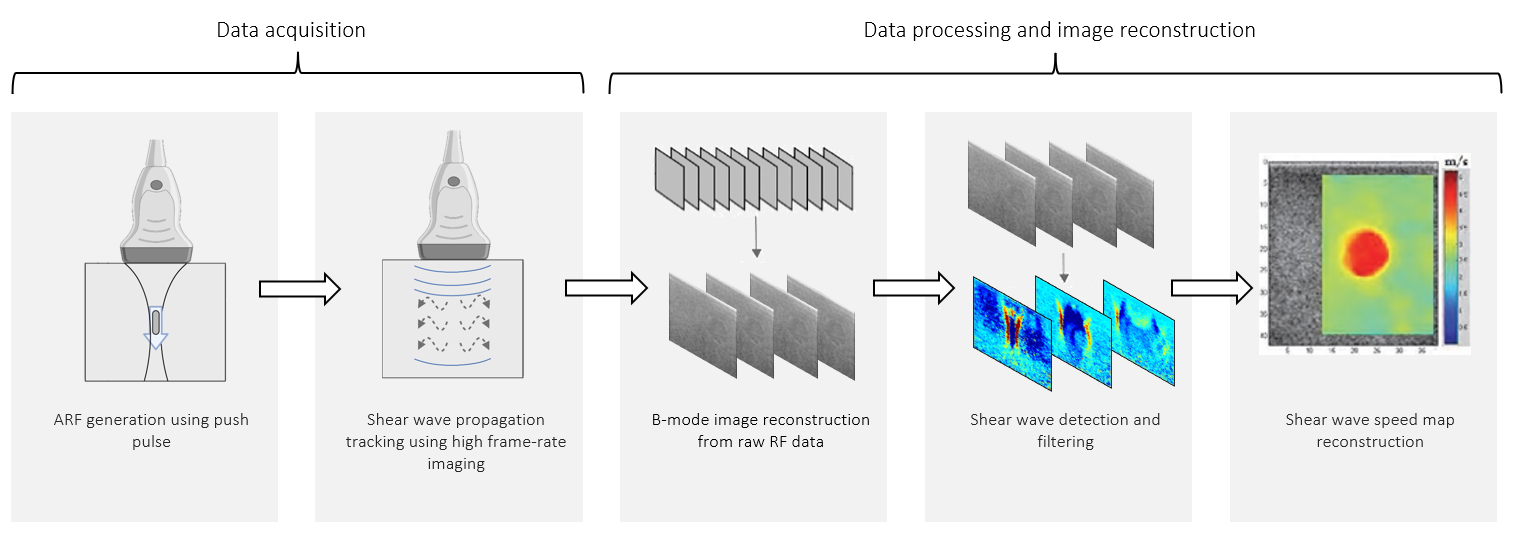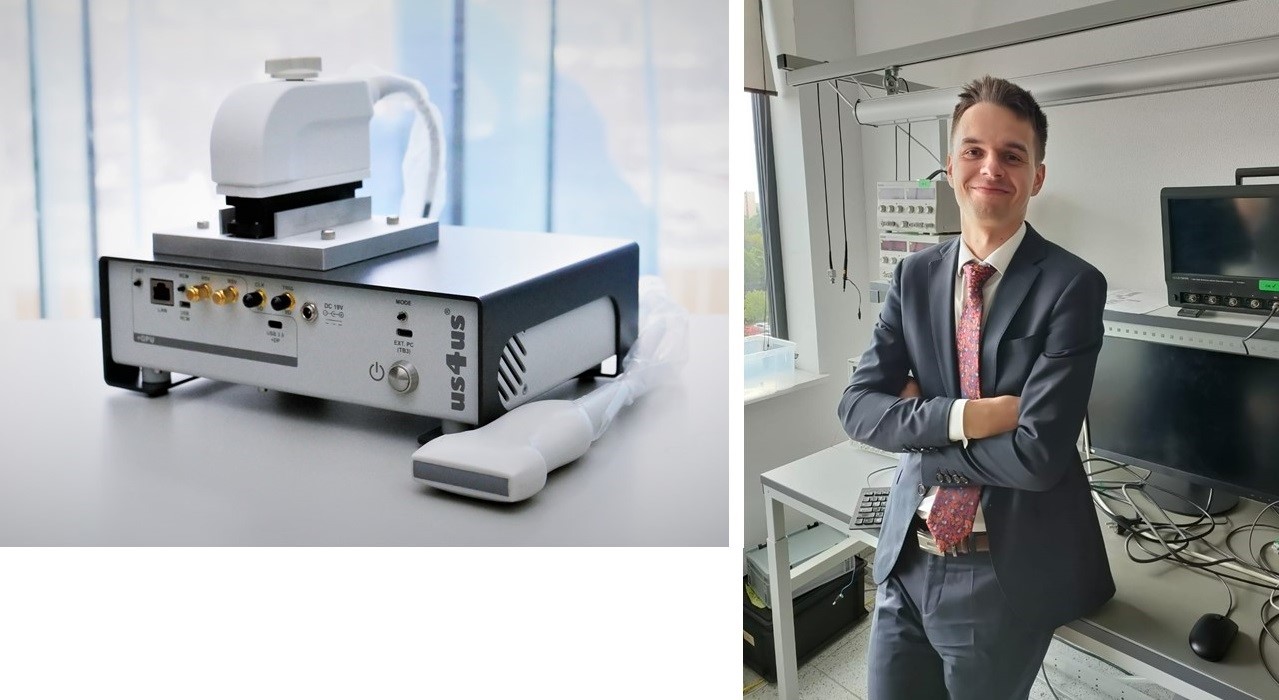According to the resolution of the Scientific Council of IPPT PAN, Damian Cacko was awarded the degree of Doctor of Science in the field of Engineering and Technical Sciences in the discipline of Information Technology and Telecommunications.
Damian Cacko's PhD was an implementation-oriented doctorate. He conducted his doctoral studies at IPPT PAN, and the industrial partner for his PhD was the company us4us. The main supervisor was Professor Zbigniew Ranachowski, and the auxiliary supervisor was Dr. Marcin Lewandowski.
Implementation of Shear Wave Elastography for Point-of-Care Ultrasound Imaging
Assessment of tissue stiffness provides a clinical opportunity for screening, early detection, and diagnosis of diseases such as breast cancer or liver fibrosis. Among all ultrasound-based elasticity imaging methods, Shear Wave Elastography (SWE) has emerged as a promising technique that enables quantitative soft tissue stiffness estimation. Novel concepts and methodological approaches in SWE have been the subject of intense research and new system solutions continue to be proposed. However, its practical implementation is complicated and constitutes several engineering challenges, including generation of high-energy excitation (push pulses) and high frame-rate data acquisition. Another key requirement is to provide a sufficient computational performance of the system to process large datasets in an image reconstruction procedure. In particular, in real-time applications, it requires providing both robust computational resources and a smart algorithm implementation strategy. Due to the aforementioned reasons, to date, the SWE has been available only on high-end commercial systems or bulk and expensive research platforms. In particular, SWE mode in the portable ultrasound devices class is not available at all. As a result, the accessibility of this method is limited.
In this thesis, engineering and research efforts were put to address this issue. Firstly, in the theoretical part, the physical principles of the SWE were discussed, and the known methods for ultrasonic tissue elasticity imaging methods were explored. It was followed by a detailed review of the 2-D SWE technique, including acquisition sequences, data processing methods, and considerations on imaging quality and safety. Then, the 2-D SWE method was implemented using a low-cost, portable, and fully configurable research system which was enhanced by the development of a dedicated 256-channel transmit extension module to support push pulses generation. The multiple-stage image reconstruction algorithm was developed that consisted of: RF data filtering, down-conversion, beamforming, shear wave detection, shear wave motion data filtering, shear wave speed estimation, image compounding, and post-processing. Real-time imaging performance was achieved by exploiting massively parallel processing using GPU for computational-intensive algorithm steps, which involved careful problem decomposition. The system was validated in experiments using both homogeneous and heterogeneous regions of an industry-standard elastography phantom. The developed system performance regarding image reconstruction speed was evaluated, and the impact of the most relevant reconstruction parameters on processing time and imaging quality was explored. Since the image reconstruction process was found to bring the biggest contribution to the whole system's power consumption, the obtained results allowed to evaluate the trade-off between power consumption and imaging quality to find a reasonable balance between those factors in a given application for efficient implementation of the 2-D SWE method using a portable scanner.
The overall achieved results have shown that by careful design it is feasible to introduce the real-time 2-D SWE imaging on a portable, cost-optimized, software-oriented ultrasound system.

Fig. 1 A general image reconstruction procedure in the 2-D SWE method

Fig. 2 The ultrasound imaging us4R-lite system (us4us Ltd., Poland), which was enhanced to implement 2-D SWE method
Fig. 3 The author of the thesis















